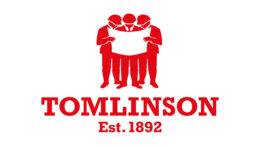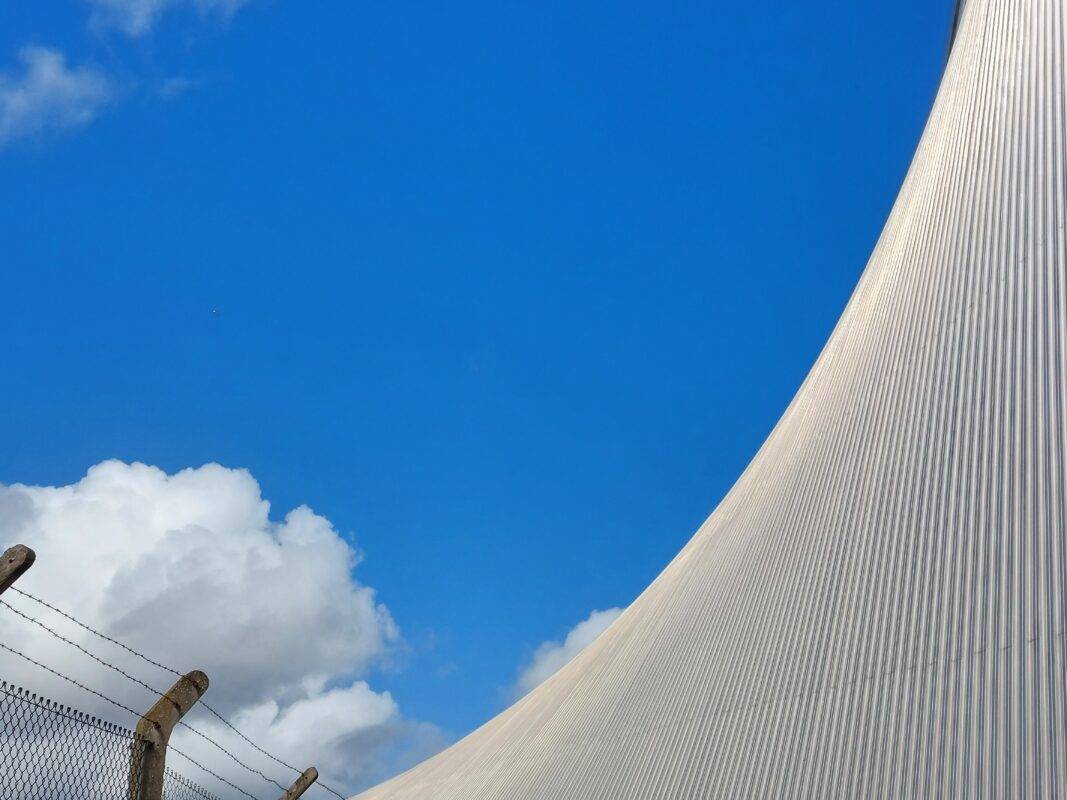
This autumn, Base Structures was delighted to return to RAF Museum Midlands at Cosford to support a project within the National Cold War Exhibition hangar. Almost twenty years after we first built the iconic curtain wall that encloses the space, the Museum contacted us with a request that called for the same careful planning and specialist expertise that shaped the original structure.
The Museum needed to move a historic Westland Whirlwind helicopter and an Armstrong Whitworth Argosy aircraft inside the hangar for permanent display. To make this possible, a temporary opening had to be created within the curtain wall, an architectural feature we originally installed in 2005.
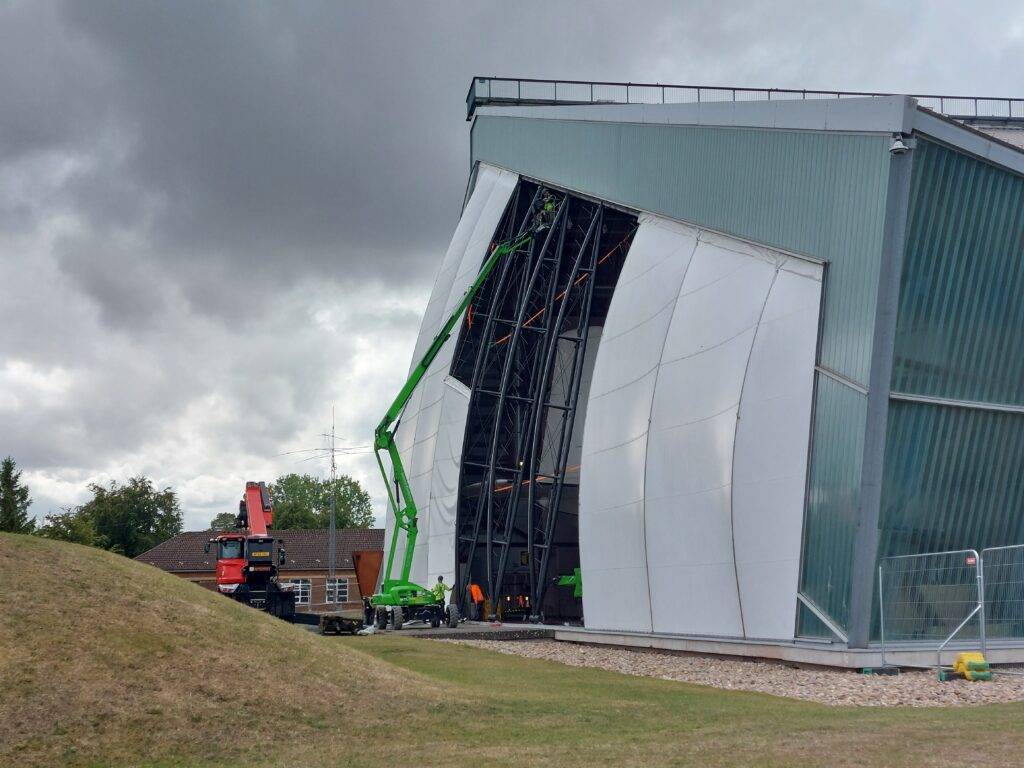
The curtain wall at Cosford is an elegant example of fabric engineering – a light-filled façade designed to define the hangar’s interior environment while protecting the era-defining aircraft displayed within. Built in 2005, it has stood the test of time thanks to a robust tensioned-fabric system, steel structural supports and highly durable materials designed to withstand both environmental exposure and the demands of a busy, working museum. Returning to the site two decades later, our team had an intimate understanding of how the façade was assembled and how best to work with it.
The brief required us to remove four large fabric panels and three steel supports from the curtain wall, creating a temporary access route large enough for the aircraft movements to take place. The work demanded planning and methodical sequencing to ensure the integrity of the structure was maintained at every stage.
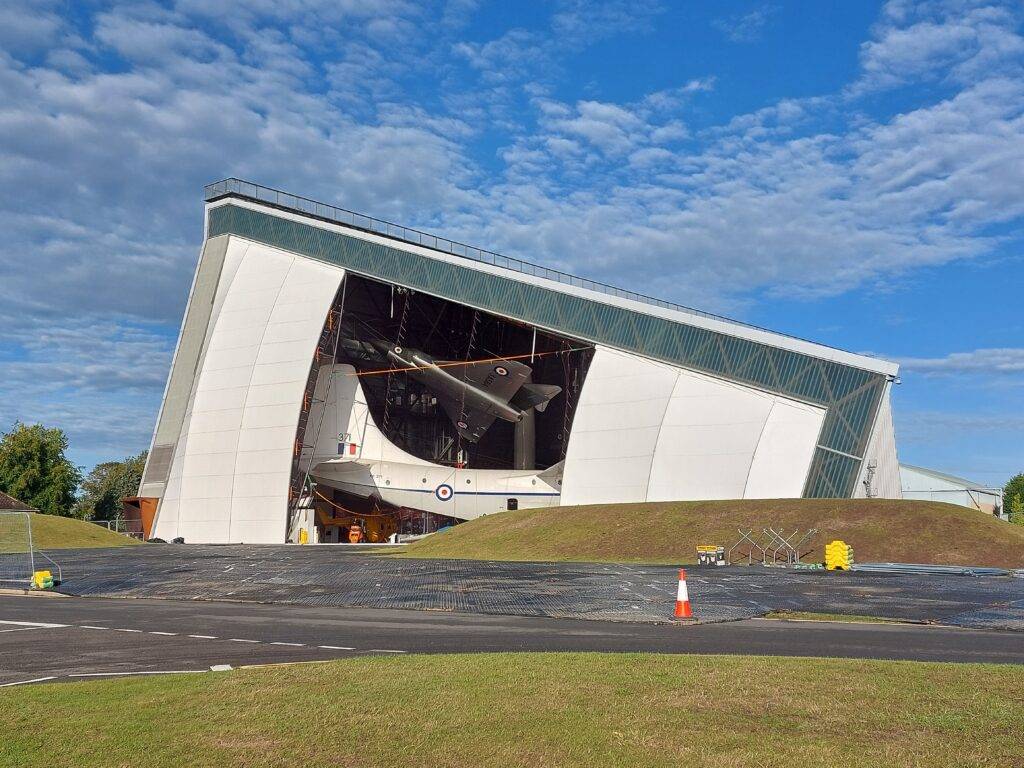
A team of four, supported by specialist machinery, spent four days carrying out the dismantling process. Each component was removed with precision and stored to allow for efficient reinstatement later in the programme. At the end of each shift, temporary bird netting was installed to safeguard the hangar from unwanted wildlife ingress overnight.
With the opening prepared, the Museum completed its aircraft movements in a single day, carefully guiding the Whirlwind helicopter and Argosy fuselage into their new homes. Once this phase was complete, our team returned to site for a further four days to reinstate the steel supports and re-tension the fabric panels, restoring the curtain wall to its original appearance and performance.
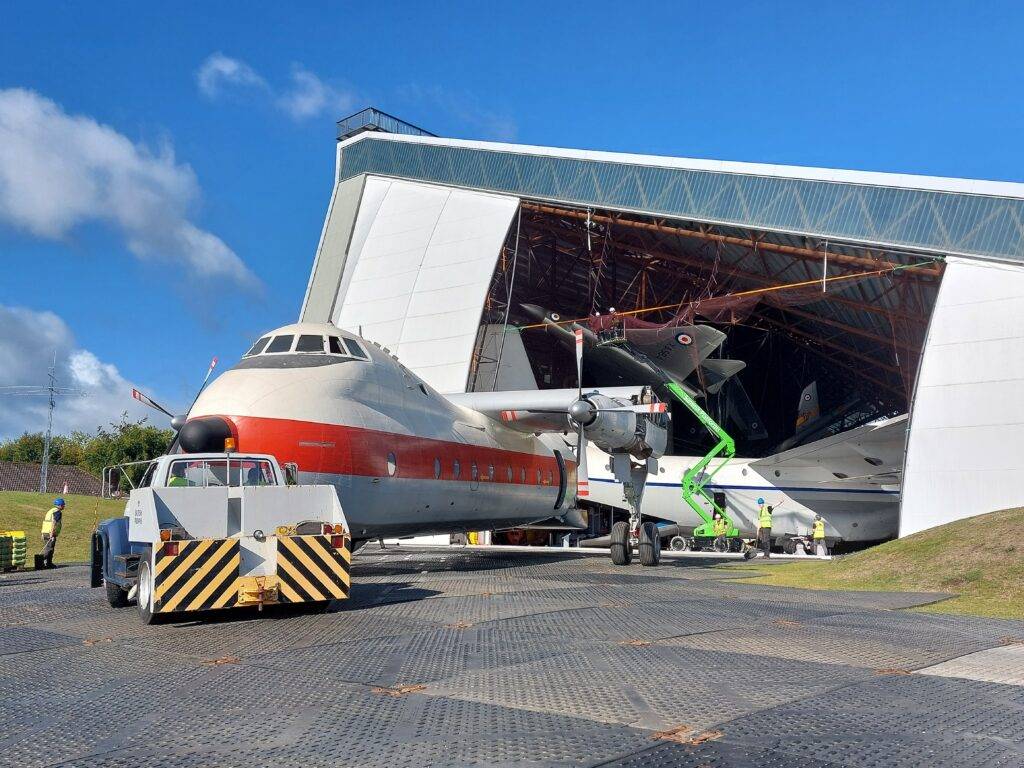
You can watch a timelapse of the whole process from RAF Midlands here:
Projects of this nature rely on communication, trust and an appreciation of the value of a museum’s collection. Throughout the programme, our team worked closely with the Museum’s project managers, conservation specialists and curatorial staff to ensure the process was safe, efficient and fully aligned with their wider goals.
Grace Ries, Head of Exhibitions and Interpretation at RAF Museum Midlands, summarised the collaboration:
“Base Structures were pivotal to the Museum’s delivery of a complex aircraft moves project to relocate the historic Westland Whirlwind helicopter and Armstrong Whitworth Argosy aircraft fuselage into the Museum’s National Cold War Exhibition for permanent display. Part of the Museum’s Inspiring Everyone: RAF Museum Midlands Development Programme, made possible with support from the National Lottery Heritage Fund, the successful delivery of this project supports the Museum’s mission to inspire our audiences with our incredible collection. It was a pleasure to collaborate with Base Structures’ specialist technical team throughout this exciting project.”
Working with the RAF Museum Midlands again has been a privilege and a reminder of the role that fabric engineering can play in supporting this country’s museum, cultural and heritage sites. We are proud to have contributed to this important project and look forward to future opportunities to help museums and exhibition spaces adapt, evolve and continue sharing their extraordinary stories with the public. Visit our blog on how we work with museum spaces for more information, or contact us for a discussion on how our expert team may be able to help you.
All photos credit: RAF Museum Midlands









